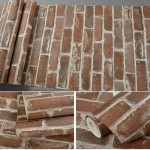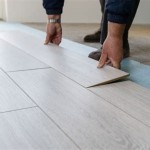How To Choose Wood Flooring Colour
Selecting the ideal wood flooring colour is a crucial step in designing a harmonious and aesthetically pleasing interior space. The colour significantly influences the overall ambience, perceived room size, and the way natural and artificial light interact within a room. This decision requires careful consideration of several factors, including existing decor, personal preferences, and the functional requirements of the space.
Wood flooring offers a spectrum of hues, ranging from light and airy blondes to rich and dramatic dark browns. Each colour evokes a different mood and complements different design styles. Understanding the nuances of these options is essential to making an informed choice that will resonate with the desired aesthetic and lifestyle.
The chosen flooring colour acts as a foundation upon which the rest of the room's design is built. It impacts the perceived spaciousness of the room, the brightness level, and the overall visual appeal. Therefore, taking the time to carefully evaluate the options and their implications is an investment in the long-term enjoyment and value of the home.
Considering the Existing Décor and Style
One of the paramount considerations when selecting a wood flooring colour is its compatibility with the existing décor and style of the home. The flooring should seamlessly integrate with the furniture, wall colours, and decorative accessories to create a cohesive and unified design scheme. A clash in styles or colours can result in a disjointed and visually jarring effect.
For example, a home with a traditional or classic design aesthetic might benefit from the warmth and richness of medium-toned wood flooring, such as oak or maple. These colours complement traditional furniture styles and create a sense of timeless elegance. Conversely, a contemporary or minimalist home might favour lighter wood tones, such as ash or birch, which offer a clean and modern aesthetic. These lighter colours enhance the feeling of spaciousness and create a bright and airy ambience.
The colour and style of existing furniture pieces should also be taken into account. If the furniture is dark and heavy, a lighter flooring option can provide a welcome contrast and prevent the room from feeling too dark or oppressive. Conversely, if the furniture is light and airy, a darker flooring option can ground the space and add a touch of sophistication. The goal is to achieve a balanced and harmonious look that reflects the overall design vision.
Wall colours also play a significant role in the overall aesthetic and must be considered alongside the flooring colour. Light-coloured walls tend to make a room feel larger and brighter, while dark-coloured walls can create a more intimate and dramatic atmosphere. A neutral wall colour palette provides the most flexibility when choosing a wood flooring colour, as it allows for a wider range of options to be considered. However, even bold or vibrant wall colours can work well with the right wood flooring, provided that the colours are carefully coordinated.
Moreover, the architectural style of the home can also influence the choice of wood flooring colour. A traditional home with intricate mouldings and ornate details might benefit from a richer and more formal wood flooring, while a modern home with clean lines and minimalist details might favour a simpler and more understated option. Ultimately, the goal is to select a wood flooring colour that complements and enhances the overall architectural character of the home.
Evaluating Light Levels and Room Size
The amount of natural and artificial light that a room receives, as well as its size, are critical factors that influence the perceived colour of wood flooring and its impact on the overall space. Light colours reflect light, making a room feel larger and brighter, while dark colours absorb light, making a room feel smaller and more intimate. Therefore, the selection of wood flooring colour should be carefully considered in relation to these factors.
In smaller rooms or rooms with limited natural light, lighter wood flooring colours are generally the best choice. These colours reflect light and create a sense of spaciousness, preventing the room from feeling cramped or claustrophobic. Light-toned woods such as birch, ash, and maple are excellent options for maximizing light and creating an airy atmosphere. Furthermore, incorporating gloss or semi-gloss finishes can further enhance the light-reflecting properties of the flooring.
Conversely, in larger rooms with ample natural light, darker wood flooring colours can be used to create a more dramatic and sophisticated look. Darker colours, such as walnut or ebony, can ground the space and add a touch of luxury. However, it is important to be mindful of the amount of light available, as dark flooring can make a room feel darker and smaller if there is insufficient natural light.
The direction of the natural light entering the room should also be considered. Rooms that receive predominantly northern light tend to have a cooler, more muted tone, while rooms that receive predominantly southern light tend to have a warmer, brighter tone. Wood flooring colours should be chosen to complement the existing light conditions. For example, a room with northern light might benefit from a warmer wood flooring colour to counteract the coolness of the natural light, while a room with southern light might benefit from a cooler wood flooring colour to balance the brightness.
Artificial lighting also plays a crucial role in shaping the appearance of wood flooring. Different types of light bulbs emit different colours of light, which can affect the way the flooring colour is perceived. For example, incandescent light bulbs tend to emit a warm, yellowish light, while LED light bulbs tend to emit a cooler, bluer light. It is important to test the wood flooring samples under different lighting conditions to ensure that the colour looks appealing under both natural and artificial light.
Considering the Practical Aspects and Maintenance
While aesthetics are paramount, practical considerations and maintenance requirements are equally important when selecting a wood flooring colour. The chosen colour should be able to withstand the wear and tear of everyday life and be relatively easy to clean and maintain. Some colours are more forgiving of dirt and scratches than others, which can significantly impact the long-term appearance and upkeep of the flooring.
Darker wood flooring colours tend to show dust, dirt, and scratches more readily than lighter colours. This is because the contrast between the dark surface and any imperfections is more pronounced. Therefore, darker floors typically require more frequent cleaning and maintenance to keep them looking their best. Homes with pets or young children might find lighter wood flooring colours to be a more practical choice, as they tend to conceal dirt and scratches more effectively.
Medium-toned wood flooring colours, such as oak or maple, offer a good balance between aesthetics and practicality. These colours are versatile enough to complement a wide range of design styles and are relatively forgiving of dirt and scratches. They are also a popular choice for high-traffic areas, as they can withstand a significant amount of wear and tear without showing excessive damage.
The finish applied to the wood flooring can also impact its durability and maintenance requirements. Matte finishes tend to be more forgiving of scratches and dents than glossy finishes, as they do not reflect light as intensely. However, matte finishes can also be more difficult to clean, as they tend to trap dirt and grime more easily. Glossy finishes, on the other hand, are easier to clean but can also be more prone to showing scratches and dents.
The type of wood used for the flooring also plays a role in its durability and maintenance requirements. Harder woods, such as oak, maple, and hickory, are more resistant to scratches and dents than softer woods, such as pine or fir. Therefore, harder woods are generally a better choice for high-traffic areas or homes with pets or young children. Additionally, engineered wood flooring, which consists of a thin layer of hardwood bonded to a core of plywood or fiberboard, is often more durable and resistant to moisture than solid hardwood flooring.
Finally, it is important to consider the long-term maintenance costs associated with the chosen wood flooring colour. Darker floors may require more frequent cleaning and refinishing than lighter floors, which can add up over time. It is also important to factor in the cost of specialized cleaning products and equipment. By carefully considering these practical aspects and maintenance requirements, homeowners can select a wood flooring colour that is not only aesthetically pleasing but also durable, easy to care for, and cost-effective in the long run.

How To Choose The Right Color For Flooring Blog Details

5 Things To Consider When Choosing Floor Color

Choosing The Right Wooden Floor Colour Wood Colors Flooring

How To Choose The Right Laminate Floor Colour Leader Floors Blog

Things To Consider When Choosing A Hardwood Floor Kährs

Choose The Right Colour For Your Hardwood Floor

Wood Floor Colours How To Choose Higherground

How To Choose The Right Stain For Wood Floors Cambridge Home

Choosing Wood Floor Colors The 2024 Guide Floorings

Hardwood Floors Colors How To Choose Westchester Ny Eagle Flooring Llc
Related Posts








